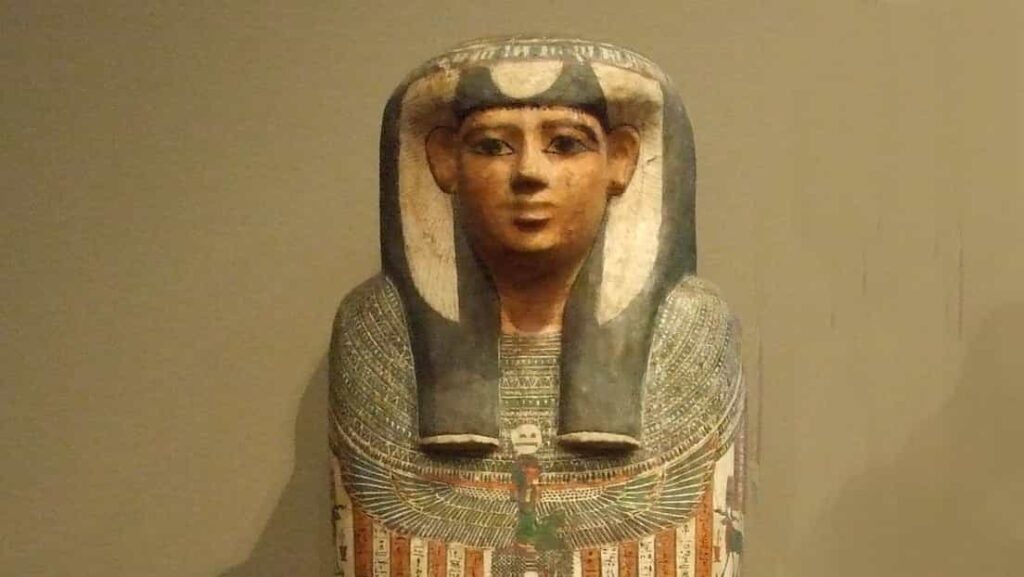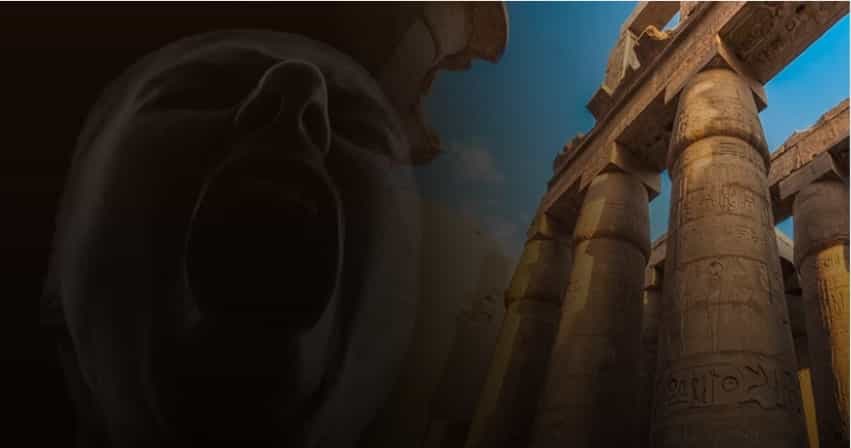The so-called “mummy of the screaming woman” was discovered in 1881 in the so-called Deir el-Bahari cache (DB320), along with other royal mummies from the 18th, 19th and 20th dynasties.
The analyzes carried out on the body revealed that a severe atherosclerosis of the coronary arteries would have caused the sudden death of this Egyptian princess, causing a sudden heart attack.
Hidden in a “Cache”
The story of this mummy began in 1881, when a cache full of royal mummies was discovered at Deir el-Bahari, on the west bank of Luxor.
In this place, the priests of the Twenty-first and Twenty-second dynasties hid some of the royal mummies buried in the neighboring Valley of the Kings to protect them from tomb robbers who were active in the area in that period.
The mummy “cache” contained, among others, the mummies of several important pharaohs such as Thutmose III and Ramses II.
Another famous mummy that was discovered there is the one known as “the screaming mummy”, which has recently been identified as that of Prince Pentawer, son of Ramses III, who was sentenced to death for having participated in the conspiracy that ended his life.
The mummy of “the screaming woman” also had an expression of terror and pain, and her mouth was open in an eternal scream, hence the name by which she is known.
But unlike Prince Pentawer, this woman’s body received excellent embalming. Consequently, it is obvious that the circumstances of her death were very different from those of the unfortunate prince.
The hieratic texts inscribed on the mummy’s linen wrappers read: “The royal daughter, the royal sister of Meret Amun.”
The mummy was designated as the “mummy of the unknown woman A”, and although the inscription states that it is the sister of a princess named Meret Amun, it is difficult to know who it is since there have been several princesses with the same name, for example Meret Amun, daughter of King Seqenenre Tao of the end of the 17th dynasty (circa 1540 BC), and also Meret Amun, daughter of Pharaoh Ramses II (1279-1213 BC), of the 19th dynasty.
A heart attack
The famous Egyptologist Zahi Hawass and Sahar Saleem, a professor of radiology at Cairo University and a specialist in mummy scanning, carried out a Computed Tomography (CT) Scan on the mummy at Cairo University.
The results indicate that the woman, who died in her sixties, suffered during her life from a severe degree of atherosclerosis, which affected many of her body’s arteries.
Atherosclerosis is a degenerative disease that progressively affects the arterial wall, leading to narrowing of the cavity and blockage of the blood vessels.
Computed Tomography showed that the woman suffered from atherosclerosis in the right and left coronary arteries, the neck arteries, the abdominal aorta and the iliac arteries, as well as in the arteries of the lower extremities.
Heart disease, especially coronary artery disease, is the leading cause of sudden death in adults even today.
It appears that the “screaming woman” died suddenly while in the position in which she was mummified, with her legs crossed and flexed.
As she died, her head tilted to the right side and her jaw dropped. “We hypothesize that the corpse of ‘the screaming woman’ might not have been discovered until hours after she died, long enough to develop rigor mortis.
Possibly the embalmers mummified the woman’s shrunken body before it decomposed or relaxed. Therefore, the embalmers could neither close the mouth nor place the contracted body in a recumbent posture, as was customary for other mummies, thus preserving the facial expression and posture it had at the time of death.
Source: Carme Mayans, National Geographic







